Best plants for the bedroom: how to choose and care for them?
Last reviewed: 11.03.2025

Plants are not only beautiful decorative elements but also an important factor that affects the atmosphere in your home. This is especially true for the bedroom, a place where we rest and rejuvenate. Properly selected plants can significantly improve air quality, create a cozy environment, and even promote better sleep. In this article, we will discuss the best plants for the bedroom, how to choose and care for them, and how they can improve your well-being.
Benefits of plants in the bedroom
Green plants in the bedroom offer many benefits:
- Improved air quality: plants help purify the air by removing toxins such as formaldehyde, benzene, and other harmful substances, improving its composition. Some plants, such as sansevieria, actively absorb carbon dioxide and release oxygen, enhancing the atmosphere.
- Psychological comfort: studies show that plants help reduce stress and anxiety levels and contribute to improved mood. They create a pleasant and relaxing atmosphere, making the bedroom the ideal place for rest and recovery.
- Decorative function: plants are an essential part of interior design. They can enliven the space, add color, and create a harmonious blend with furniture and other decor elements.
Best plants for the bedroom
- Sansevieria (snake plant)
Sansevieria is one of the most low-maintenance and effective plants for improving air quality. This plant not only purifies the air from toxins but also releases oxygen at night, contributing to better sleep.
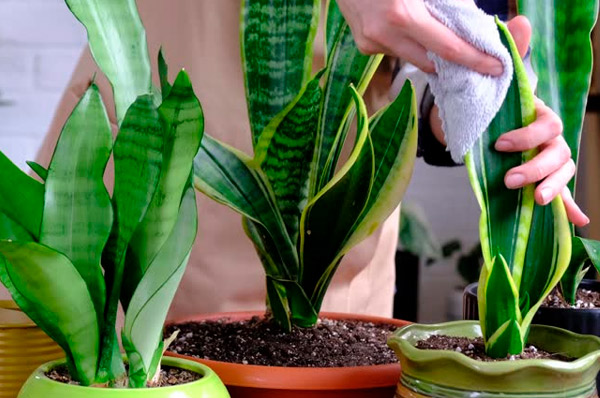
- Aloe vera
Aloe vera is not only a decorative plant but also beneficial. It helps purify the air from harmful substances and has healing properties, soothing the skin. Aloe vera can be used to treat burns and cuts, and its gel has antibacterial and anti-inflammatory properties.
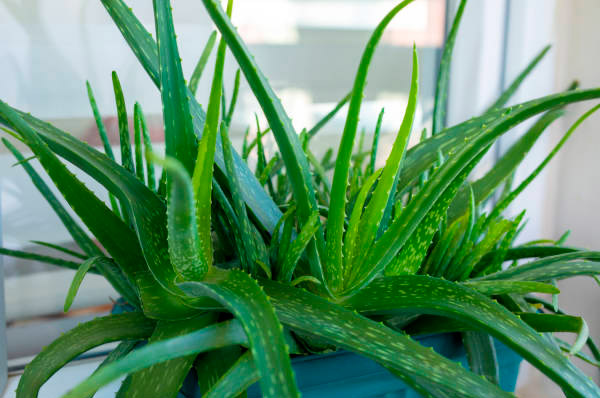
- Ficus
The ficus is not only a beautiful plant but also an excellent air purifier, creating a relaxing atmosphere. It is suitable for those looking to add greenery to their interiors and improve the microclimate.

- Fern
Ferns help humidify the air, which is particularly important during the winter months when indoor air is often dry. Ferns are also known for their ability to purify the air from formaldehyde and other harmful substances.
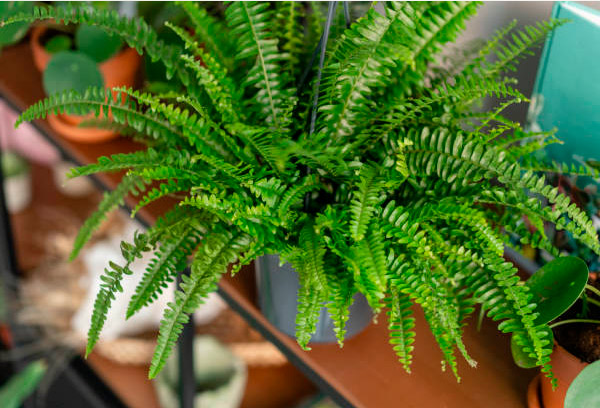
- Lavender
Lavender is known for its calming properties and is often used in aromatherapy to combat insomnia and anxiety. This plant not only smells pleasant but also positively affects sleep quality, helping you relax and relieve stress.
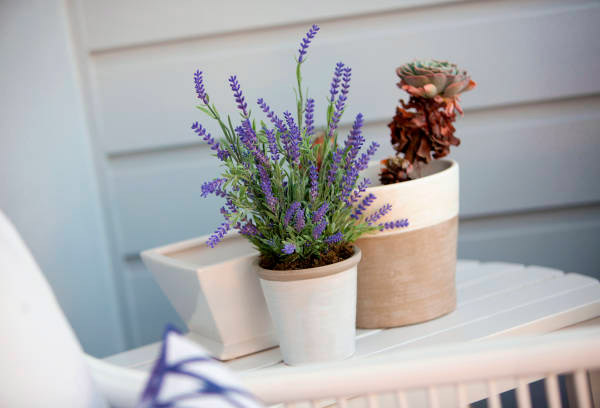
- Chlorophytum (spider plant)
Chlorophytum is an easy-to-care-for and effective plant that cleans the air of toxins and increases oxygen levels. It actively absorbs carbon dioxide and releases oxygen, which is especially beneficial in the bedroom where you spend a lot of time.
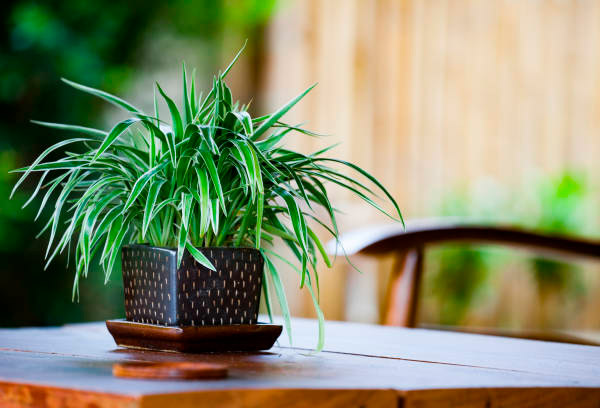
How to choose plants for the bedroom
When choosing plants for the bedroom, it is important to consider several factors:
- Lighting: some plants, such as sansevieria and ferns, can grow well in low light conditions. Meanwhile, ficus and lavender require bright but indirect light.
- Temperature: all plants have their temperature preferences. For example, aloe vera and cacti thrive in temperatures ranging from 18 to 24°c, while ferns and ficuses can grow well in cooler temperatures.
- Care: if you prefer not to spend too much time on plant care, choose low-maintenance species like succulents and sansevieria. These plants require less frequent watering and can go for long periods without attention.
How plants can help improve sleep
Many plants, such as lavender, jasmine, and ferns, are known for their relaxing properties, which promote better sleep. Lavender, for example, helps reduce anxiety and promotes deep, healthy sleep. Jasmine has been shown in studies to improve sleep quality and reduce nighttime awakenings.
Plants for the bedroom with minimal care
If you do not want to spend much time on plant care, choose plants such as succulents, sansevieria, or cacti. These plants require minimal attention, need less frequent watering, and adapt well to low-light conditions.
Tips for placing plants in the bedroom
- In corners: place plants in the corners of the room so that they don’t obstruct movement but still create a pleasant atmosphere.
- Nightstands and shelves: light plants like lavender and chlorophytum are perfect for placing on nightstands or shelves next to the bed.
- Near windows: plants that need more light, such as ficus and aloe vera, can be placed near windows where they will receive ample sunlight.
Problems and solutions when growing plants in the bedroom
- Overwatering: many plants suffer from excessive watering, especially during the colder months. To prevent this, use pots with drainage holes and monitor soil moisture levels.
- Pests: common pests, such as spider mites and aphids, can attack plants in the bedroom. Regularly check plants for pests and use organic insecticides to avoid problems.
- Lack of light: if your bedroom is poorly lit, choose shade-loving plants such as sansevieria or ferns, which can grow even in low light conditions.
Conclusion
Plants in the bedroom not only create a cozy environment and beautify the space but also help improve air quality and sleep. By choosing the right plants for your bedroom, considering each plant's needs, and adapting to your room’s features, you can create a harmonious and restful environment. Don’t forget about regular care to ensure your plants thrive and continue to bring beauty and benefits to your bedroom.
Frequently asked questions
- Can i use plants in the bedroom if i have allergies?
Yes, but it is important to choose plants that do not release strong odors and do not cause allergies. Plants like succulents, sansevieria, and aloe vera are excellent choices for allergy sufferers.
- How often should i water plants in the bedroom?
Watering frequency depends on the type of plant. Succulents and cacti require less frequent watering compared to ferns or ficuses, which prefer more humid soil.
- Can i keep plants on the nightstand?
Yes, many plants such as lavender and chlorophytum can be placed on the nightstand, where they will create a relaxing atmosphere and improve sleep quality.
- What plants are best for the bedroom?
Some of the best plants for the bedroom include: aloe vera, snake plant (Sansevieria), peace lily, Benjamin ficus, chlorophytum, lavender, green palm, and fern. These plants are known for their ability to purify the air and create a pleasant atmosphere.
- How to choose a plant for the bedroom?
When choosing a plant for the bedroom, consider its lighting needs, care level, size, and air-purifying capabilities. It is also important to take into account any allergies within the family and aesthetic preferences.
- How much light do plants need in the bedroom?
Most bedroom plants prefer bright, but diffused light or partial shade. However, some plants, such as the snake plant and peace lily, can thrive in low light conditions.
- How often should plants in the bedroom be watered?
Watering frequency depends on the plant type, temperature, and humidity in the room. On average, most plants need to be watered once a week, but some, like aloe vera, require less frequent watering, while ferns may need more frequent moisture.
- Which plants purify the air in the bedroom?
Plants such as peace lily, snake plant, chlorophytum, Benjamin ficus, and aloe vera are known for their ability to purify the air by removing harmful substances, increasing oxygen levels, and improving indoor air quality.
- Should soil with drainage be used for plants in the bedroom?
Yes, it is important to use soil with good drainage to avoid water stagnation and root rot. You can use pots with drainage holes or add drainage material at the bottom of the pot.
- How to deal with pests on plants in the bedroom?
Regularly inspect plants for pests such as spider mites, aphids, or mealybugs. If pests are found, you can use gentle insecticides or natural remedies, such as a soapy solution. It is also important to keep the plants and surrounding environment clean.
- Can flowering plants be grown in the bedroom?
Yes, many flowering plants are suitable for the bedroom. Peace lilies, begonias, orchids, and anthuriums not only decorate the interior but also help purify the air. However, consider their lighting and care needs.
- How to care for a snake plant in the bedroom?
The snake plant is one of the most low-maintenance plants. It prefers bright places but can tolerate low light. Watering should be moderate, allowing the soil to dry out between waterings. Regularly remove dust from the leaves and ensure good ventilation.
- Can plants in the bedroom affect sleep quality?
Yes, plants can positively affect sleep quality. They increase oxygen levels and decrease carbon dioxide levels during the night. Some plants, such as lavender, also have a calming fragrance that promotes relaxation and better sleep.
